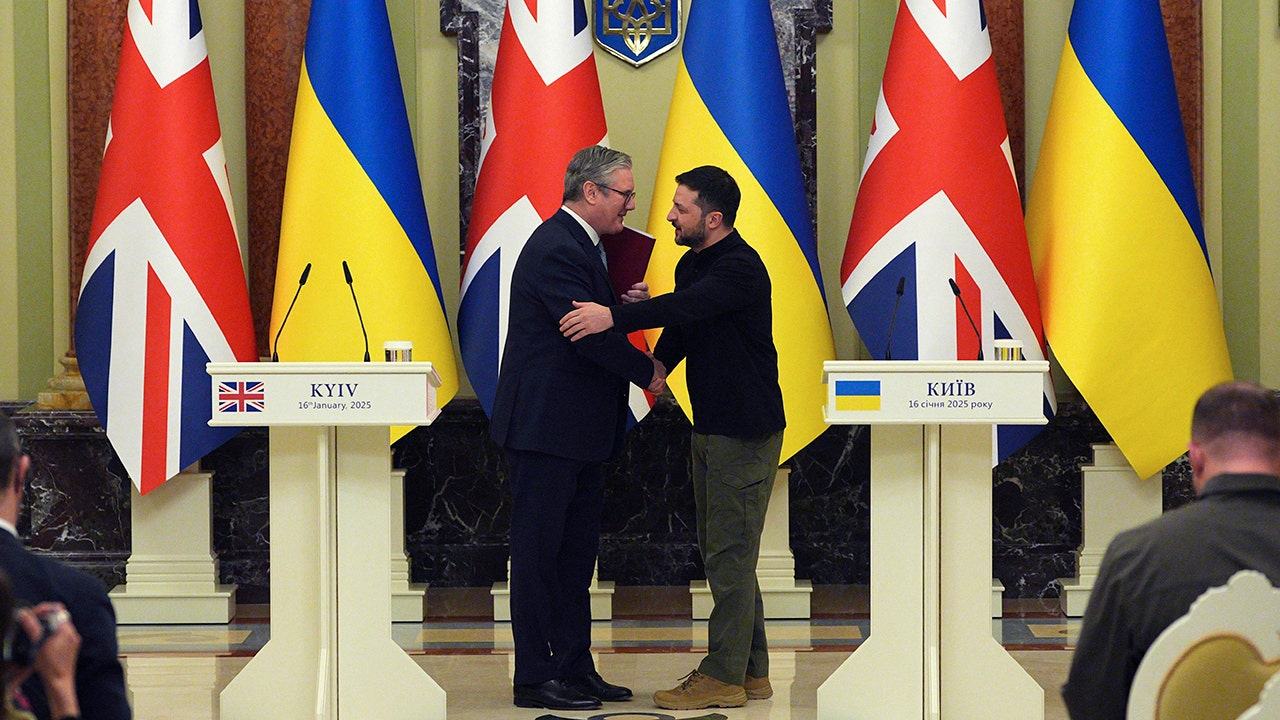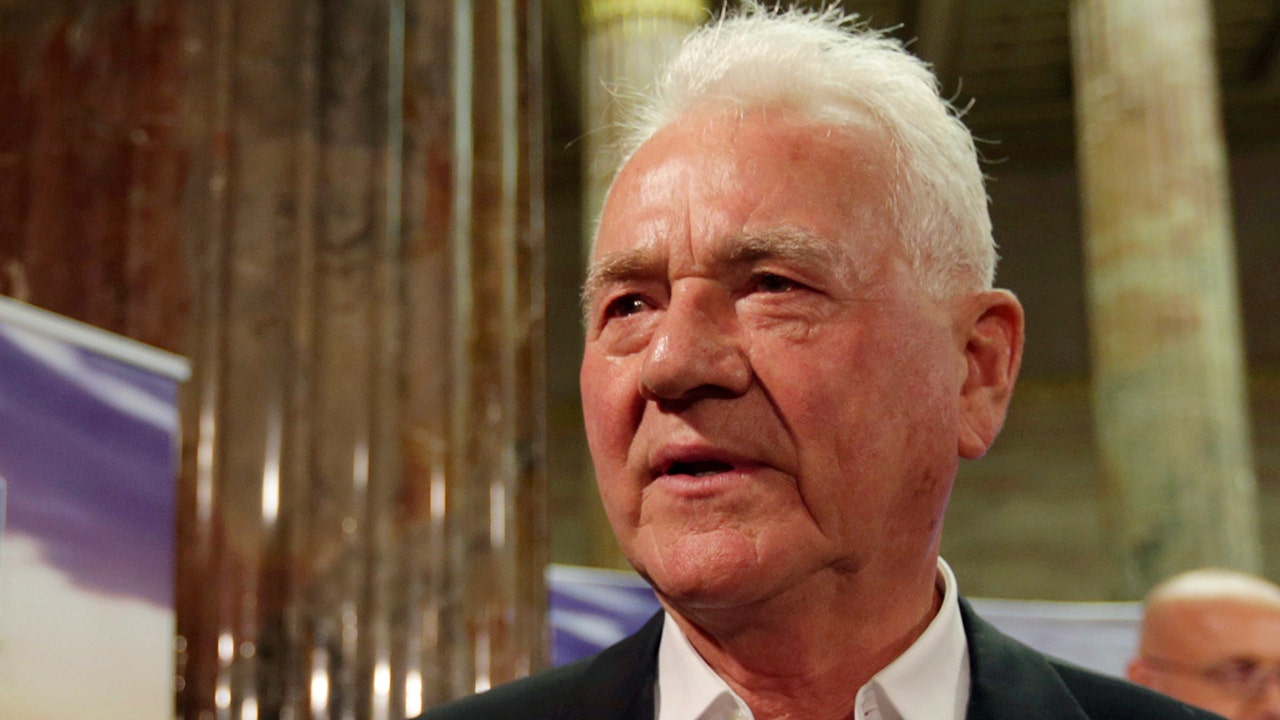Artificial Intelligence (AI) has become the next great domain in the theater of war, and NATO allies have made it a top priority as they look to bolster the alliance’s collective defense.
A summit in Washington, D.C., next week will not only commemorate the 75th anniversary of the alliance but will focus on safeguarding NATO in an increasingly hostile geopolitical sphere.
The global consequences of the war in Ukraine have been far-reaching, and the deepening divides between the West and top authoritarian adversaries has had an effect on everything from defense to trade.
At the core of how NATO is looking to safeguard itself in challenging times is change in AI technology.
BATTLEFIELD DEMANDS SPARK AI RACE IN UKRAINE AS WAR WITH RUSSIA RAGES ON
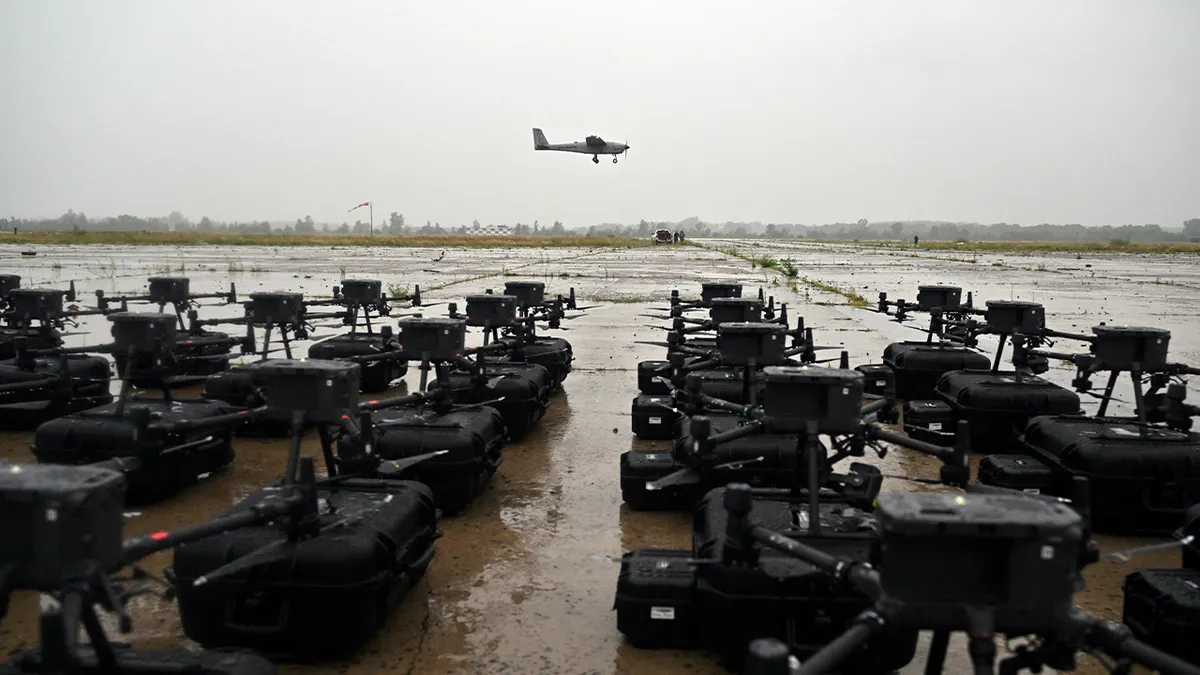
A UJ-22 Airborne (UkrJet) reconnaissance drone prepares to land during a test flight in the Kyiv region Aug. 2, 2022, prior to being sent to the front line. (Sergei Supinsky/AFP via Getty Images)
The reliance on drones in kinetic warfare drastically ramped up with the conflict in Ukraine, prompting an AI race and the need for evolving offensive and defensive strategies.
“There should be concern about countering Chinese and Russian AI capabilities in wartime, but concern should not be mistaken for despair,” said retired Rear Adm. Mark Montgomery, a senior fellow at The Foundation for Defense of Democracies.
“Just as there are reasons for concern in countering Chinese and Russian kinetic weapons — such as hypersonic maneuvering cruise missiles — the U.S. has the ability to build effective offensive and defensive systems to deter and, if necessary, defeat adversary actions,” he added.
In March, NATO more than doubled its tech accelerator sites under a program known as Defense Innovation Accelerator for the North Atlantic (DIANA), which works with private and public companies to develop “deep technologies” to address the alliance’s defense challenges.
Under DIANA, there will be testing sites in 28 of the 32 NATO nations in a move to support innovation across the alliance in AI, cyber, 5G, hypersonic and autonomous systems.
But the vast expansion of AI capabilities means the alliance is also looking to establish guardrails, particularly when it comes to AI use in wartime.
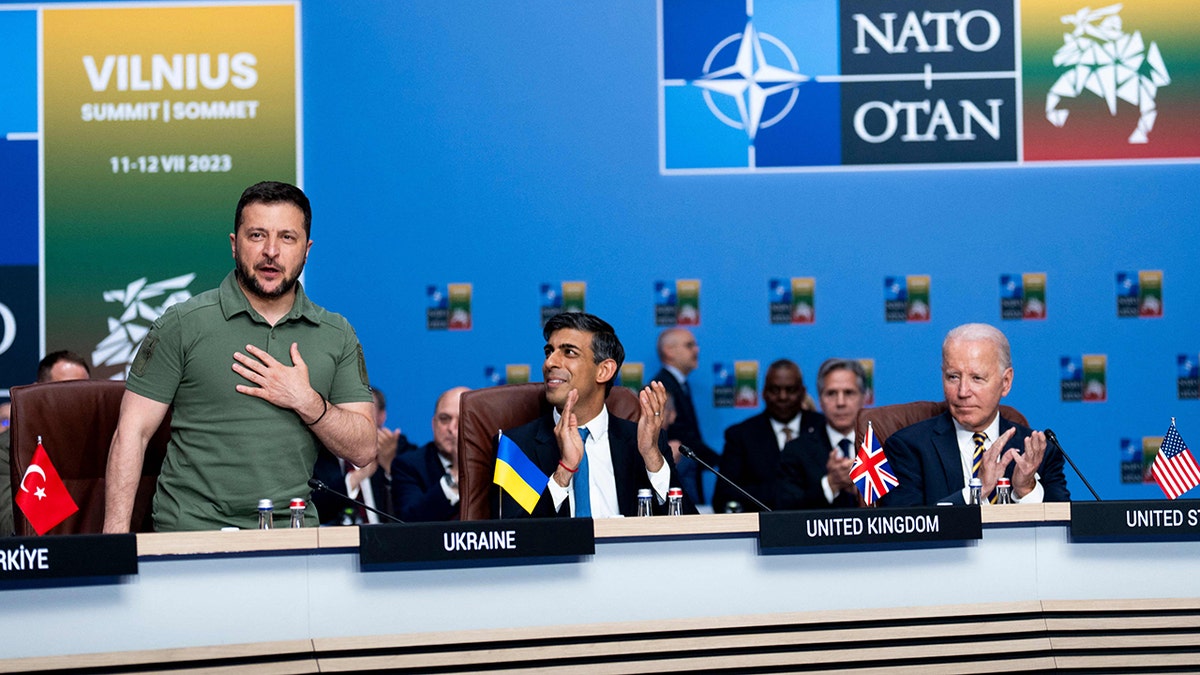
Ukrainian President Volodymyr Zelenskyy, left, receives applause from NATO members, including British Prime Minister Rishi Sunak, center, and U.S. President Biden ahead of a meeting of the NATO-Ukraine Council during the NATO Summit in Vilnius July 12, 2023. (Doug Mills/Pool/AFP via Getty Images)
PUTIN, XI MEET TO BOLSTER ALLIANCE AGAINST WEST AHEAD OF NATO SUMMIT
“There will be doctrinal discussions at NATO on making sure that we don’t have ‘SKYNET’ take over and start engaging in kinetic action without humans making decisions,” former NATO Assistant Secretary General for Defense Investment Marshall Billingslea told Fox News Digital.
“As drones become increasingly sophisticated, while remaining inexpensive, and as people introduce artificial intelligence into drones for attack, there is a need for a comparable level of AI that has to get incorporated into countering UAS [unmanned aircraft systems], as well as theater missile defense capabilities,” he said.
Billingslea said AI is already being used effectively by the U.S. when it comes to intelligence, surveillance and reconnaissance, but that is now being expanded throughout NATO.
As the alliance looks to ramp up its collective defense, its AI initiatives are aimed at not only collecting security and intelligence data from all partner nations, but utilizing that intel more efficiently by offloading the human burden of analyzing it.
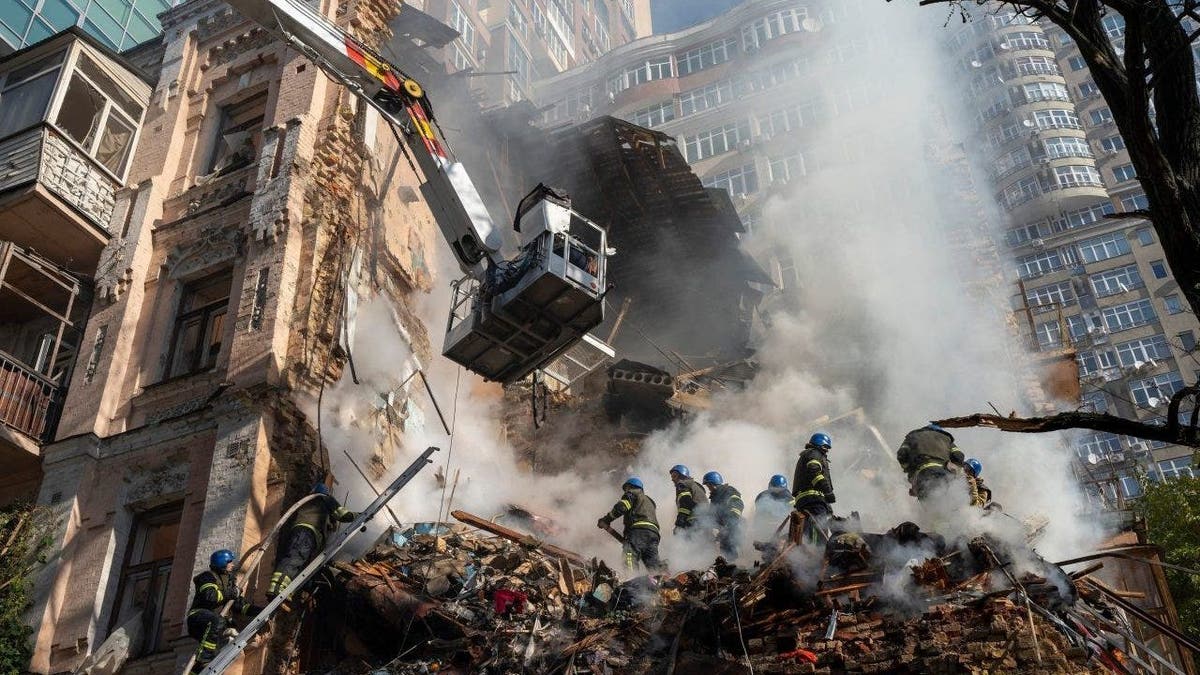
Firefighters work after a drone attack on buildings in Kyiv, Ukraine, Oct. 17, 2022. (AP Photo/Roman Hrytsyna, File)
RECORD NUMBER OF NATO MEMBERS REACH DEFENSE SPENDING GOAL AS UKRAINE WAR PERSISTS
AI in kinetic warfare is not the only area that has NATO on high alert.
Propaganda has long played a role in wartime, but the use of disinformation campaigns and malware have become key tools in soft-war operations that can be widely employed using AI, making AI-augmented soft-war tactics a significant challenge to counter.
“The area of greater concern for me is the use of AI to improve malign influence operations during peacetime or in a crisis buildup,” Montgomery said. “Russia and China have both demonstrated a willingness to operate in the gray zone to a much greater degree than the U.S. and its democratic allies. As a result, Chinese and Russian AI-infused malign influence operations could have a significant negative impact.”
Dependence on Chinese systems has long been debated between the U.S. and its European allies, though Beijing’s ties with Moscow has prompted many in Europe to cut ties with Chinese digital infrastructure companies.
The war in Ukraine has highlighted NATO’s need to safeguard its members and partner nations, particularly non-NATO countries in Europe and in areas like the Indo-Pacific, from threats posed by AI technologies.

Russian President Vladimir Putin and Chinese President Xi Jinping toast during their dinner at The Palace of the Facets in Moscow, Russia, March 21, 2023. (Pavel Byrkin/Sputnik/Kremlin Pool Photo/AP)
CLICK HERE TO GET THE FOX NEWS APP
“There’s a coalition of authoritarians that NATO has to deal with, and that is China, Russia, North Korea and Iran,” Montgomery said, pointing to how all four have not only positioned themselves against the West but have done so, in part, by backing Moscow with military and economic aid for its war in Ukraine.
“From my perspective, Ukraine is on the front line of fighting all four of these authoritarian regimes. NATO better step up to support it,” he added.



